Geschichte des Farmobils
Das Farmobil, ursprünglich als landwirtschaftliches Nutzfahrzeug gedacht, wurde vom Industriedesigner Louis L. Lepoix für den Traktorhersteller Fahr entwickelt.
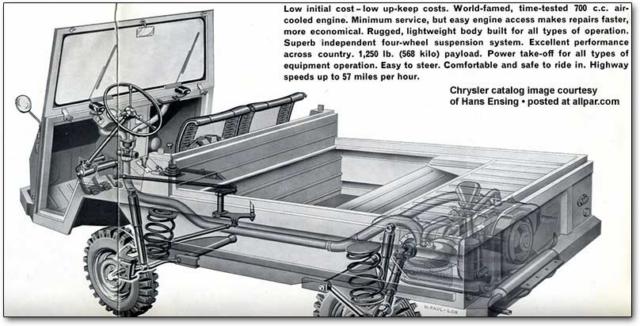
Louis L. Lepoix sitzt an seinem Schreibtisch in Baden-Baden. Er spielt mit dem Zeichenstift, vor sich ein leeres Blatt Papier. Umgeben ist der Deutsch-Franzose von eingerollten Zeichnungen sowie von Modellen aus Gips und Holz. Auf dem Boden liegen zerknüllte Entwürfe. Lepoix brütet. Autos hat er bereits entworfen, Schiffe, Flugzeuge – was immer einem Industriedesigner einfällt. Plötzlich der Geistesblitz, mit schwungvollen Strichen setzt er ihn aufs Papier: Das Farmobil ist skizziert.
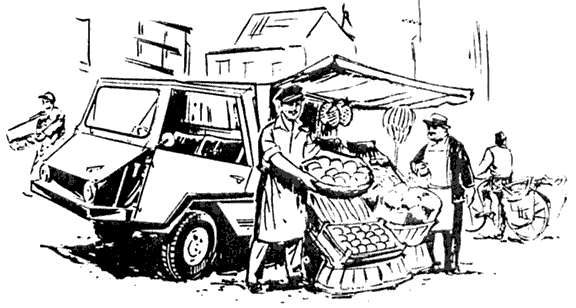
Die Vorgeschichte: Der Traktorenhersteller Fahr in Gottmadingen im Schwarzwald an der Schweizer Grenze will seine Schlepper-Monokultur um ein landwirtschaftliches Transportfahrzeug erweitern und hat Lepoix damit beauftragt. Die Eckdaten hat Fahr vorgegeben: ein kleiner Transporter, vier gleich große Räder, mit rund 20 PS minimal motorisiert, dafür mit einer Fünfgangbox ausgestattet, deren erster Gang fürs Gelände besonders kurz übersetzt sein soll. Dazu Platz für zwei Mann und eine große Ladefläche. Auch die Dimensionen stehen schon fest: rund 1,80 Meter Radstand, etwa 1,40 Meter Breite. Nutzlast und Leergewicht des Gefährtes sollen dabei ungefähr gleich sein. Was Lepoix in seinem Konstruktionsbüro fti (form-technik-international) daraus macht, ist seiner Schaffenskraft freigestellt.
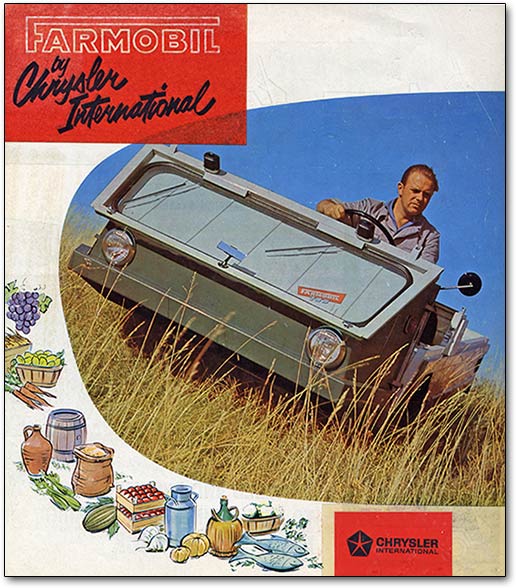
Die ersten Zeichnungen der Außenansicht stammen von 1953, im Folgejahr macht sich Lepoix Gedanken über die Technik. Das unterscheidet ihn von seinen Kollegen: Er kümmert sich eben nicht nur um die Form, sondern versucht, die Technik mit einzubeziehen. So liefert er an Fahr Ende 1954 ein komplettes, wenn auch noch theoretisches Konzept: Der Rahmen des Transporters besteht aus zwei Längsträgern, die mit der Bodengruppe verschweißt sind. Die vordere Radaufhängung hat eine geschobene, die hintere eine gezogene Längsschwinge, jeweils gummigelagert. Die Schraubenfedern sind direkt am Rahmen abgestützt, hydraulische Trommelbremsen sorgen für Verzögerung.
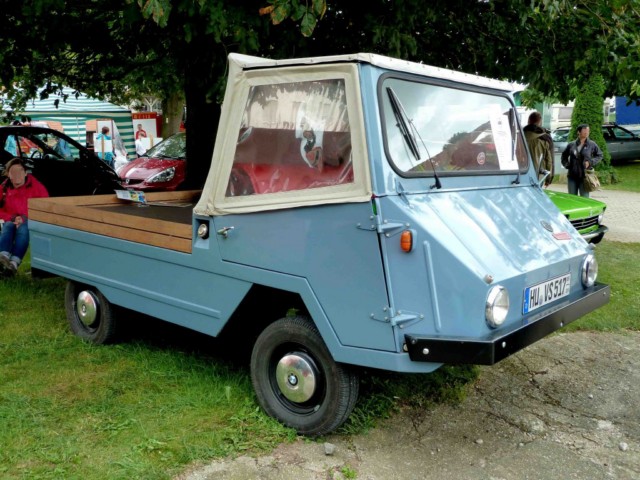
Geschichte NAMCO
Namco oder Namco Motors war ein griechischer Fahrzeughersteller aus Thessaloniki, der von den 1950er Jahren bis 1982 Fahrzeuge fertigte. Bekanntestes Produkt war der Citroën Pony.
Der Citroën Pony
Petros Kontogouris erwarb 1957 die Lizenz, um ein von Dr. Wilfried Fahr in der Schweiz entwickeltes Fahrzeug zu produzieren. 1961 wurde dafür das Unternehmen FARCO gegründet, welches das Farmobil produzierte. Das Unternehmen wurde 1963 von Chrysler aufgekauft und in Chrysler Hellas umbenannt, 1967 wurde die Produktion eingestellt. Kontogouris führte bereits Verhandlungen zur Lizenzfertigung eines NSU-Fiat, entschied sich jedoch für die Entwicklung des Pony in Zusammenarbeit mit Citroën. 1972 wurde der Citroën Pony vorgestellt der ein großer Erfolg wurde. Der Wagen wurde in viele Länder, darunter Deutschland und die USA exportiert. 1982 wurde das Fahrzeug eingestellt, da die Marktnische nach einem billigen Vielzweckauto nicht mehr vorhanden war.
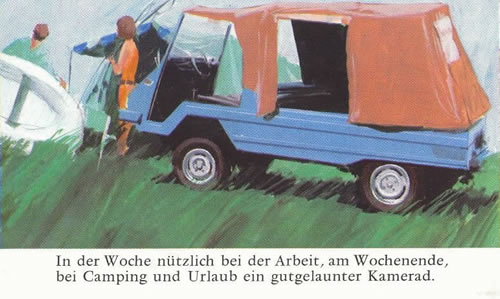
Namco versuchte daraufhin Aufträge zur Fertigung von Militärfahrzeugen zu bekommen, so etwa für den schweren Namco Milicar 6×6 und baute entsprechende Prototypen, konnte aber aufgrund der fehlenden Erfahrungen auf diesem Bereich nicht überzeugen. Der begehrte Auftrag ging an die Firma ELBO, die als Steyr Hellas damals den bewährten Steyr 680M fertigte. Einzig der leichtere Namco Panther 4×4 wurde bestellt, was nicht zu einer dauerhaften Auslastung der Produktion führte.

Offiziell hat Namco nie den Fahrzeugbau eingestellt, aber seither bis auf Prototypen keine Fahrzeuge mehr gefertigt. Das Unternehmen besteht als Importeur von Lkw weiter.
Mail von Mark Bird aus Australien:
Hello again Jorg, I am surprised but very happy to have a fast reply and in very good english.
I will tell you a bit about my Farmobil story and send you some more pictures on a separate email. I have known about the Farmobil ever since my father had a BMW motorcycle dealership in Rhodesia during the sixties and seventies (now Zimbabwe). Because of the BMW motor we saw some Farmobils for mechanical repairs. I was only 16 years old then There were only ever a very small number of Farmobils in Rhodesia, perhaps no more than 10 – 20?
It was only in 1998 (now living in Australia) I decided I would really like to learn more about the Farmobil and while on the internet I found my Farmobil for sale in France near Lyon. My brother lives in Paris so I asked him to have a look at it to make sure the car was original and not fitted with a 2CV or VW motor. I only wanted an original vehicle. To cut a long story short I imported the vehicle to Australia in Dec 1999 and commenced the long and costly restoration.
The body of the vehicle was quite rusty so many new body panels were re-made with much care and professional expertise. You can see the extent of the work in the photos. During the restoration I visited the Fahr Tractor Club in Gottmaddingen and actually met one of the engineers who worked on the original design team. His name was Frederich Graff and he personally knew Peter Kondogouris. This was a very lucky and fortunate experience. I visited their archive as well and was able to see photos of the complete design studies and development phases prior to Farco being given the contract to manufacture the Farmobil.
After 12 years I have now got the Farmobil completed (apart from the original canvas roof and frame) which I am still restoring. As part of researching the vehicle and restoring it I have been able to identify which cars and manufacturers the different parts were soused from to make a 100% authentic and original restoration. I am happy to help anyone else who may be seeking this information.
I did try unsuccessfully to make contact with Peter kontogouris as part of my research but only managed to make contact with his son Andreas. I am very glad to hear that you have contact with these people and am happy for you to let them read my story and see the photos. I would love to know more about some of the manufacturing statistics of the Farmobil like for instance how many right hand drive Farmobils were manufactured? I’m sure Mr Kondogouris may know these facts.? Did he have much to do with the production after Chrysler took control? I would also love to see any photos inside the factory which may have been taken during production.
Please tell me more about the Farmobils in Greece. I heard that the Farmobil was never sold in Greece. Is this true? Do you have a Farmobil and if so please send me some photos? Please send photos of any of the Farmobils you may have contact with. Your idea of starting a program / club sounds very interesting.
I have quite a few contacts with some French Farmobil enthusiasts as a lot were sold in France through the Chrysler International Simca network. I know of probably as many as 70 – 80 Farmobils that still exist but most of them are in very bad condition or beyond restoration.
I will now end and send another email with more pictures. You are welcome to post the pictures on the internet if you wish. Thanks again for the contact.
Best regards, Mark
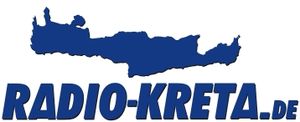

Guten Tag, Nette infos. Ich wolte nur sagen das Das Farmobil in Australien (ihr Photo)gehoert mir und das bin Ich am stoer. Es ist gerade viede zugelassen nach ein 12 jahr restoration. Wenn Sie mehr info oder Biolde haben moechte schik mir ein email. Mfg aus Australien, Mark Bird